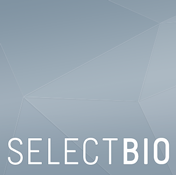Co-Located Conference AgendasInnovations in Microfluidics 2024: Rapid Prototyping, 3D-Printing 
2024年5月6日(一)08:00 | Conference Registration and Materials Pick-Up + Coffee in the Exhibit Hall | 09:00 |  | Conference Chair Welcome and Introduction by Conference Chairperson -- Scope of the Conference and Topics Covered
Albert Folch, Professor of Bioengineering, University of Washington, United States of America
|
| |
Session Title: 3D-Printing of Microfluidics |
| | 09:15 |  | Keynote Presentation Title to be Confirmed.
Gregory Nordin, Professor, Brigham Young University, United States of America
|
| 10:00 |  | Keynote Presentation Title to be Confirmed.
Noah Malmstadt, Professor, Mork Family Dept. of Chemical Engineering & Materials Science, University of Southern California, United States of America
|
| 10:30 | A High Resolution, SLA PDMS Resin and its Application in Microfluidic Organ Models
Joseph Potkay, Research Assistant Professor, University of Michigan, Clinical Research Engineer, VA Ann Arbor Healthcare System, United States of America
This presentation will cover our progress toward developing and characterizing a high resolution and biocompatible polydimethylsiloxane SLA 3D printing resin and its use to create various microfluidic structures including microfluidic artificial lungs. | 11:00 | Mid-Morning Coffee Break and Networking in the Exhibit Hall | 11:30 |  | Keynote Presentation Additive Manufacturing for Microfluidic and Wearable Sensor Systems
Bonnie Gray, Professor of Engineering Science, Simon Fraser University, Canada
We are surrounded by sensors in our daily lives. These (usually) small, inobtrusive devices constantly capture data about our environment, and what we see, hear, and do. Sensors form the foundation for analysis systems and are an integral part of every closed-form system. Many sensors seek to provide more continuity for health and well-being via constant monitoring of important health parameters. Similarly, other sensors seek to address the health of other systems, such as preventing failures in the power grid. Sensors as discrete components may be difficult to integrate into low-profile systems, such as textile-based systems, for development of smart clothing. These and other sensors systems could benefit from 3D printing or other additive manufacturing methods, via the integration of conventional printing materials with new functional (e.g., sensing or actuating) printed materials. Sensors could thus be easily tailored and printed to individual needs and more easily integrated with other printed components. This presentation focuses on development of wearable and other printed sensors that are designed directly on textiles, or fabricated using 3D printing methods for easier integration with fluidic housings. We discuss the current state-of-the-art, and present examples of integrated textile-based and printing-based sensors. We investigate how advances in flexible devices and systems (electronics, sensors, actuators, microfluidics) and additive manufacturing (e.g., printing) can be adapted to low-profile, non-obtrusive, and personalized sensor systems. |
| 12:00 |  | Keynote Presentation Title to be Confirmed.
Leanna Levine, Founder & CEO, ALine, Inc., United States of America
|
| 12:30 | Networking Buffet Lunch in the Exhibit Hall -- Networking with Colleagues, Engage with Exhibitors and View Posters | 14:00 |  | Keynote Presentation 3D-Printed Microfluidic Circuitry via Alternative Additive Manufacturing Strategies
Ryan Sochol, Associate Professor, University of Maryland, College Park, United States of America
Over the past decade, researchers have demonstrated that additive manufacturing-or "three-dimensional (3D) printing"-approaches provide powerful means for achieving integrated microfluidic circuits and systems. Although the majority of developments in the area of 3D-printed microfluidic circuitry have relied on mesoscale "vat photopolymerization" techniques, such as "stereolithography", there are a wide range of additive manufacturing approaches that offer utility for microfluidic circuit design, fabrication, and integration. In this talk, Prof. Ryan D. Sochol will discuss how his Bioinspired Advanced Manufacturing (BAM) Laboratory is leveraging the capabilities of alternative additive manufacturing technologies-namely "PolyJet 3D Printing" and "Two-Photon Direct Laser Writing"-to realize 3D-printed microfluidic circuits for soft robotic applications… including a soft robotic "hand" that plays Nintendo. |
| 14:30 | Kloe Technology Spotlight Presentation | 15:00 | Mid-Afternoon Coffee Break and Networking in the Exhibit Hall | 16:00 | 3D-Printed Epidermal Microfluidic Systems
Tyler Ray, Professor, University of Hawaii at Manoa, United States of America
An emerging class of wearable devices integrates microfluidic lab-on-chip designs with low-modulus materials, colorimetric assays, and electrochemical sensors to support the real-time, non-invasive analysis of sweat. Such skin-interfaced microfluidic systems offer powerful capabilities for personalized assessment of health, nutrition, and wellness through the non-invasive, real-time analysis of sweat. Initially simple systems of microfluidic channels, current devices comprise sophisticated networks channels, valves, and reservoirs with some embodiments employing multilayer design strategies. While these platforms exhibit powerful analytical capabilities, device fabrication requires time, labor, and resource-intensive cleanroom processing, which restricts the device design space (2D) and elongates the development time. Additive manufacturing processes, particularly stereolithography (SLA)-based printing, offer powerful pathways for overcoming these limitations by providing significant reductions in prototype development cost and cycle time while substantially expanding device capabilities with fully 3D device designs. Here, we present a simplified 3D-printing prototyping process to fabricate flexible, stretchable, epidermal microfluidic devices (‘3D-epifluidics’). Reducing fabrication time to [O]min, this approach enables the integration of spatially-engineered features including 3D-structured passive capillary valves, monolithic channels, and reservoirs with spatially-graded geometries. With geometric features comparable to established epifluidic devices (channels >50 µm), benchtop and on-body testing validate the performance of 3D-epifluidic devices. | 16:45 |  | Keynote Presentation High-Throughput Lung Microphysiological Systems
Shuichi Takayama, Professor, Georgia Research Alliance Eminent Scholar, and Price Gilbert, Jr. Chair in Regenerative Engineering and Medicine Wallace H. Coulter Department of Biomedical Engineering, Georgia Institute of Technology & Emory University School of Medicine, United States of America
There is a need to better understand lung disease, accelerate drug discovery, and better predict human clinical trial outcomes and individualized drug responses. This presentation will describe efforts to develop microphysiological systems (MPSs) to accomplish this goal. Specific topics include the first microfluidic lung-on-a-chip developed at Michigan. A Transwell-96 based air-blood barriers that can be coupled with automated flow cytometry. And a 384 well format assay using lung Organoids with Reversed Biopolarity (lung-ORBs). Specific applications include single-ORB based high-throughput assays of SARS-CoV-2 infection and therapeutics, neutrophilic inflammation studies, and analyzing the injurious effects of fluid mechanical effects associated with lung stethoscope sounds. |
| 17:30 | Close of Day 1 of the Conference Programming | 18:00 | Networking Reception | 19:30 | Close of Day 1 of the Conference |
2024年5月7日(二)08:00 | Morning Coffee, Pastries and Networking in the Exhibit Hall | 09:00 | Expanding the Droplet-Microfluidics Toolkit with Electrokinetics
Robbyn Anand, Associate Professor, Iowa State University, United States of America
Droplet-based techniques have had a profound impact in biotechnology, owing to an ability to perform rapid and massively parallel reactions in minute fluid volumes. However, once droplets are formed, their composition can be altered through limited functions including the addition of reagents through droplet merging, which increases droplet volume, and through in-droplet mixing. Further, while droplet contents can be measured through, there remains a need for more versatile methods to probe droplets without significantly altering their contents. In this presentation, we describe a suite of in-droplet electrokinetic methods including de-mixing, mobility-based separations, desalting, and "salting". Finally, we will share initial results for the measurement of the ionic content of droplets. | 09:30 |  | Keynote Presentation Title to be Confirmed.
Mandy Esch, Project Leader, National Institute of Standards and Technology (NIST), United States of America
|
| 10:00 |  | Keynote Presentation Title to be Confirmed.
Sunitha Nagrath, Professor of Chemical Engineering and Biomedical Engineering, University of Michigan-Ann Arbor, United States of America
|
| 10:45 | Mid-Morning Coffee Break and Networking in the Exhibit Hall | 11:30 |  | Keynote Presentation Title to be Confirmed.
David Juncker, Professor and Chair, McGill University, Canada
|
| 12:00 | 3D-Printing in the Microfluidics Field -- Current Status
Albert Folch, Professor of Bioengineering, University of Washington, United States of America
| 12:45 | Networking Buffet Lunch in the Exhibit Hall -- Networking with Colleagues, Engage with Exhibitors and View Posters | 14:00 | Enhancing the Hemocompatibility of 3D-Printable Silicone Elastomers for Artificial Lung Applications
Riya Aggarwal, Student Researcher, Potkay Laboratory, University of Michigan - Ann Arbor, United States of America
In this study, we investigate the nonthrombogenic effects of imbuing our polydimethylsiloxane (PDMS) based 3D-printable resin with hydrophilic molecules with the goal of reducing the body’s natural coagulation response to foreign materials, coming closer to mimicking the native blood interface. |
* 活动内容有可能不事先告知作更动及调整。
|

